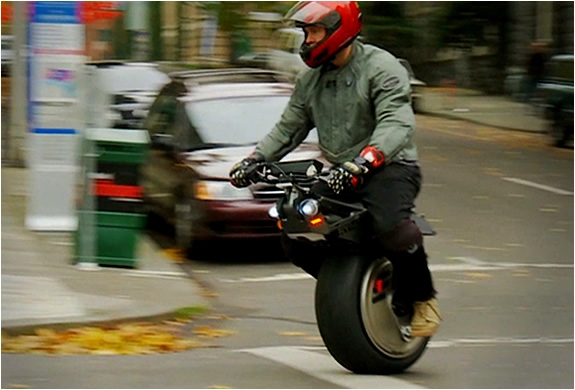The urban mobility landscape is witnessing a quiet revolution, not on two wheels, but on one. One-wheel electric scooters, once a niche toy for tech enthusiasts, are steadily carving out a significant space as a legitimate form of personal transportation. Combining a unique riding experience with compact portability, these self-balancing devices are capturing the imagination of commuters and recreational riders alike, prompting innovation and competition among a growing field of manufacturers.
This rising popularity is reflected in solid financial growth projections. According to Straits research, the global one wheel electric scooter market size was valued at USD 139.71 million in 2024 and is projected to grow from USD 146.97 million in 2025 to USD 220.48 million by 2033, registering a CAGR of 5.2% during the forecast period (2025–2033). This consistent growth indicates a shift from a fringe hobby to a more mainstream micro-mobility segment, driven by advancements in technology and changing urban transit needs.
Key Players and Competitive Dynamics: A Battle for Balance
The one-wheel segment is dominated by a pioneering leader and a handful of ambitious challengers, each with distinct strategies.
-
Future Motion (USA): The undisputed pioneer and market leader, Future Motion’s Onewheel brand is synonymous with the category itself. The company has built a cult-like following through a direct-to-consumer model and a vibrant community. Its product line has evolved from the flagship Onewheel GT to more accessible models like the Onewheel Pint X. However, Future Motion has faced significant headwinds, including a major recall of all its models in 2023 following reports of safety issues leading to injuries. This has forced the company to implement a new safety hardware update, impacting its brand perception and creating an opening for competitors.
-
Floatwheel (China): Operating in a legal gray area, Floatwheel has emerged as a formidable competitor by offering products that are often seen as more powerful and customizable than Onewheels, at a lower cost. The company embraces an open-source philosophy, appealing to tinkerers and riders frustrated with Future Motion’s closed ecosystem. Floatwheel’s ADV Pro model is a direct challenger, but its ambiguous intellectual property status relative to Future Motion's patents creates ongoing uncertainty.
-
Inmotion (China): A major player in the broader electric unicycle (EUC) market, Inmotion has expertise in self-balancing technology. While its focus is broader, the company’s reputation for robust build quality and safety features positions it as a potential significant entrant if it chooses to dedicate more resources to a dedicated one-wheel scooter model.
-
King Song (China): Another leading EUC manufacturer, King Song is known for its innovative engineering and high-performance wheels. Like Inmotion, its deep R&D in gyroscopic stabilization and battery management systems gives it a strong foundation to compete directly in the one-wheel space should consumer demand warrant it.
Emerging Trends: Performance, Safety, and Community
The development of new one-wheelers is being shaped by clear rider demands:
-
Enhanced Safety Features: In the wake of the Onewheel recall, safety has become the paramount concern. Manufacturers are now highlighting features like advanced warning systems for pushback (the safety mechanism that warns riders of motor overload), brighter headlights and taillights, and more robust firmware to prevent unexpected shut-offs.
-
Increased Range and Power: The quest for longer adventures is driving innovation in battery technology and motor efficiency. Newer models are boasting ranges exceeding 20-30 miles on a single charge, with more powerful motors providing greater torque for tackling hills and varied terrain.
-
Customization and Modularity: A strong aftermarket and DIY culture has emerged. Riders are seeking customizable components like tires for different terrains, footpads for comfort and control, and fenders. Companies that embrace this modularity, like Floatwheel, are building loyal communities.
-
Terrain Expansion: While initially designed for pavement, there is a growing trend towards all-terrain capabilities. Rugged tires and reinforced construction are making one-wheel scooters viable for trails, grass, and gravel, expanding their use beyond urban commuting.
Recent News and Global Updates
-
North America: The most significant recent news is the conclusion of the U.S. Consumer Product Safety Commission's (CPSC) investigation into Future Motion, leading to the recall and a mandatory hardware update for all Onewheel models.
-
Europe: The segment is experiencing steady growth, particularly in countries with supportive micro-mobility laws like Germany and the Netherlands. European distributors are increasingly stocking models from both Future Motion and Asian manufacturers.
-
Asia-Pacific: As the manufacturing hub, China is a massive domestic market for these devices. Brands like Inmotion and King Song have a strong home-field advantage, and local competition is fierce, driving down prices and accelerating feature innovation.
Summary
The one-wheel electric scooter segment is maturing rapidly, moving from a novel gadget to a serious personal transport option. While facing safety challenges, the industry is responding with technological improvements and greater performance, fueled by a passionate global community of riders.


